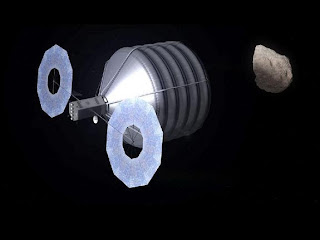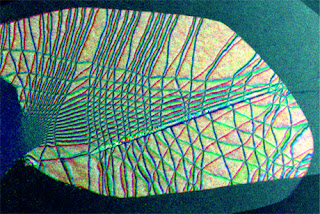700th post on BSFS: enjoy!
They did a run of "Trek Nation" on the Science Channel (as I'm apt to watch). What Rod Roddenberry (Gene's son) didn't cover in the biopic was his father's declared atheism as I guess it didn't matter towards finding out about his father post his demise. Gene and his mother, Majel Barrett in an interesting contrast to Gene's declarative were married in a Shinto ceremony, and he spent a large part of their marriage (his second, and like Einstein) in the beds of other women.
However, Gene described himself an "eternal optimist." He was an observer of the 60's, the loosening mores on sex; the beginning of diversity and racial strife; riots, assassinations of people striving to make the lives of others within their group and the nation as a whole better: Chavez, Evers, Kennedy (JF and RF); King, Shabbaz (Malcolm X). Some southern markets refused to play the space opera, even before Kirk and Uhura's famous forced-by-aliens first televised interracial kiss; Richard and Mildred Loving were anomaly, controversy and topic one of fire and damnation sermons.
His optimism was an eschatology: his belief that humans would eventually evolve from and resolve the older conflicts that had plagued it. A view of of the world from World War II, Korea and Vietnam that made it a little less bleak. Though Gene was not a scientist or engineer, the show inspired many of us into STEM fields. The series "created" things to tell the story of humanity: warp drive was so they wouldn't have to deal with lifetimes of thousands of years; astronauts having to deal with the loss of loved ones decades or centuries in the past would get old quick. Automatic doors are now a product of optical electronics; tricorders are reality; the communicator is now an I-phone; 3-D printers are the closest thing to "tea: Earl Grey, hot!"
In excerpts of the afterword to Orwell's "1984," Eric Fromm wrote this:
This hope has its roots both in Greek and in Roman thinking, as well as in the Messianic concept of the Old Testament prophets. The Old Testament philosophy of history assumes that man grows and unfolds in history and eventually becomes what he potentially is. It assumes that he develops his powers of reason and love fully, and thus is enabled to grasp the world, being one with his fellow man and nature, at the same time preserving his individuality and his integrity.
One of the most important ones is a new form of writing which developed since the Renaissance, the first expression of which was Thomas More's Utopia (literally: "Nowhere"), a name which was then generically applied to all other similar works. Thomas More's Utopia combined a most penetrating criticism of his own society, its irrationality and its injustice, with the picture of a society which, though perhaps not perfect, had solved most of the human problems which sounded insoluble to his own contemporaries. What characterizes Thomas More's Utopia, and all the others, is that they do not speak in general terms of principles, but give an imaginative picture of the concrete details of a society which corresponds to the deepest longings of man. In contrast to prophetic thought, these perfect societies are not at "the end of the days" but exist already -- though in a geographic distance rather than in the distance of time.
So, Gene's writing of Star Trek is an extension of this thought, perhaps our reaching towards it an unspoken need to seek hope from hopelessness.
The other observation of Trek Eschatology: the need of Old-School Trek to do plays; Will Riker playing jazz trumpet; Spock on Vulcan harp; Data, Geordi, Picard, Worf on the holodeck: living and working for months/years in space probably drives one kind of stir crazy: your world is literally a tritanium "can" separating you from the cold and sure death of space. It's also a clever way to showcase the actors' other talents, as Trek isn't guaranteed a long run.
I'd like to also think in some cramped future confines - warp core, or sleeper ship - one lesson we should take from art is never surrendering to technology what makes us "human" in the first place...

















